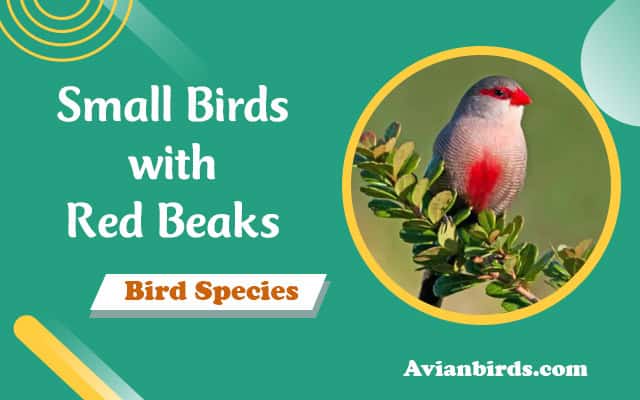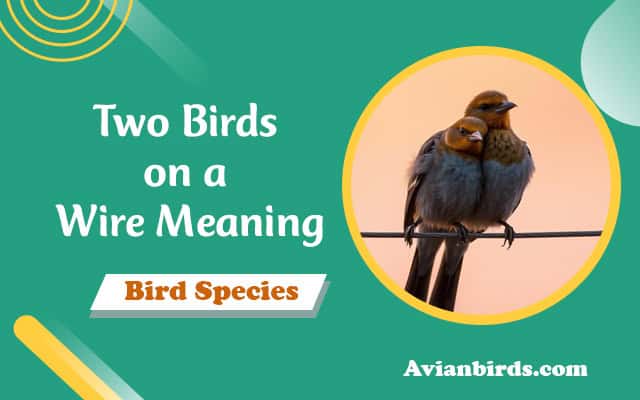Top 10 Small Birds with Red Beaks (With Pictures)
Birds with striking red beaks capture attention with their vibrant look and charming personalities. While red-beaked birds come in various sizes and colors, smaller birds with this feature have a unique appeal. Here’s a list of the top 10 small birds with red beaks that bird enthusiasts love to spot!
1. Common Waxbill (Estrilda astrild)
The Common Waxbill is a small bird native to Sub-Saharan Africa, instantly recognizable by its slender red beak and subtle red eye stripe. With a delicate brown and gray body, this bird has a gentle look that makes it popular in aviaries worldwide.
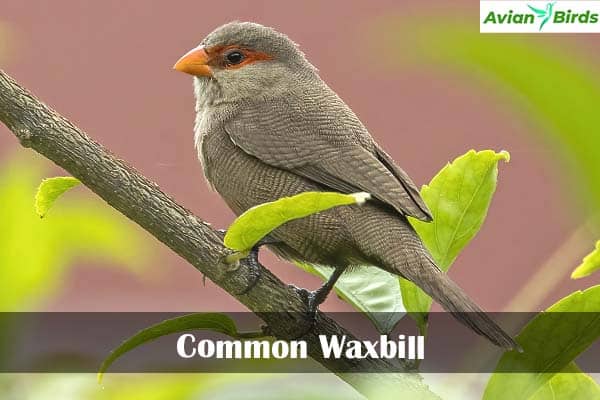
- Size: Around 4-5 inches
- Habitat: Grassy areas, wetlands, and cultivated regions
- Fun Fact: Common Waxbills are social birds, often seen in flocks of 20 or more.
2. Red-billed Firefinch (Lagonosticta senegala)
Known for its brilliant red plumage and small red beak, the Red-billed Firefinch is a striking bird found across much of Africa. Males display a vibrant red colour, while females have a more subtle brown tone with red highlights.
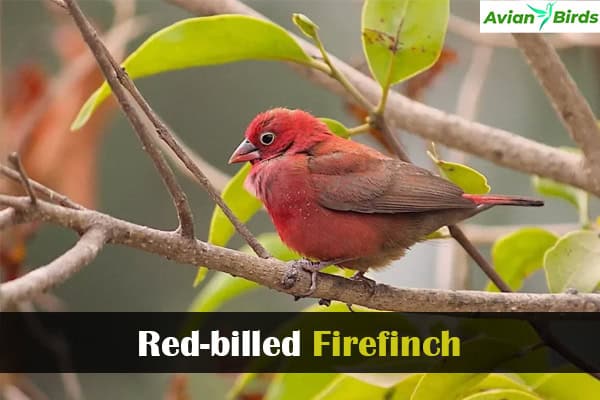
- Size: 3.5-4 inches
- Habitat: Savannas, villages, and gardens
- Fun Fact: These finches are often found near human settlements and adapt well to different environments.
3. Zebra Finch (Taeniopygia guttata)
Native to Australia, the Zebra Finch is a favorite among bird keepers for its lively nature and unique patterns. It sports a red-orange beak that stands out against its gray and white body. Males have a distinct cheek patch, adding to their charm.
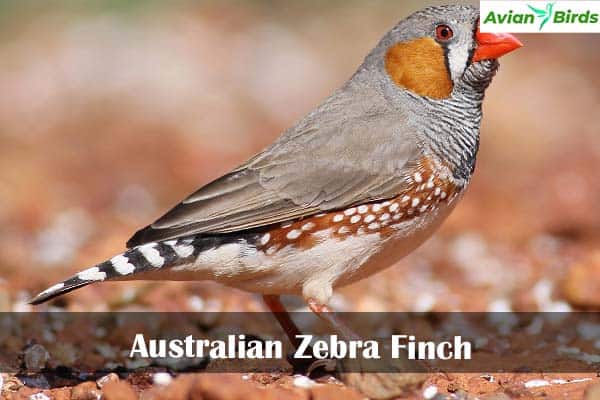
- Size: 3-4 inches
- Habitat: Dry grasslands and scrubby areas
- Fun Fact: Zebra Finches are social birds and communicate through a series of melodic chirps.
4. Red Avadavat (Strawberry Finch) (Amandava amandava)
The Red Avadavat, also called the Strawberry Finch, is a small bird with a vivid red body and tiny white spots. This bird is especially eye-catching during the breeding season, when males turn bright red to attract mates.
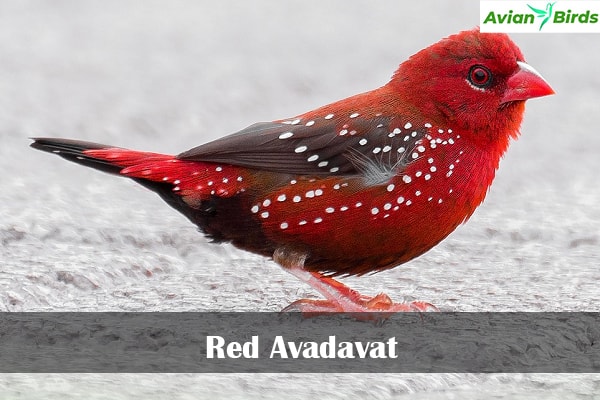
- Size: 3-4 inches
- Habitat: Wetlands, grasslands, and agricultural areas in South and Southeast Asia
- Fun Fact: The Red Avadavat’s intense coloration makes it a popular choice among bird watchers and aviary enthusiasts.
5. Northern Cardinal (Cardinalis cardinalis)
The Northern Cardinal is one of the most iconic birds in North America, known for its brilliant red feathers and bold red beak. While the males are bright red, females have a more muted tan color with red accents.

- Size: 7-9 inches (a bit larger than the others on this list)
- Habitat: Woodlands, gardens, and shrublands across North and Central America
- Fun Fact: Northern Cardinals are monogamous and often sing to communicate with their partners.
6. Red-cheeked Cordon-bleu (Uraeginthus bengalus)
This tiny bird is a real beauty, with a turquoise-blue body and a striking red beak. Found in parts of Africa, the Red-cheeked Cordon-bleu is named after the male’s red cheek patches, which add an extra pop of color.

- Size: 4-5 inches
- Habitat: Open savannas, grasslands, and cultivated areas
- Fun Fact: These birds are highly social and often seen foraging on the ground in small flocks.
7. European Goldfinch (Carduelis carduelis)
Although it’s primarily known for its golden wing patches, the European Goldfinch also has a vivid red face and beak. This charming bird is a common sight across Europe and parts of Asia, and is often kept as a pet for its pleasant song.

- Size: 5-6 inches
- Habitat: Woodlands, orchards, and gardens
- Fun Fact: The European Goldfinch is known for its sweet, melodious song and can even mimic other birds’ calls.
8. Java Sparrow (Padda oryzivora)
The Java Sparrow, also known as the Java Finch, is a small, plump bird native to Southeast Asia. It sports a distinctive pinkish-red beak that stands out against its gray body and white cheeks. Although they are primarily found in Indonesia, Java Sparrows have been introduced to various other regions.

- Size: 5-6 inches
- Habitat: Grasslands, rice fields, and gardens
- Fun Fact: Java Sparrows are known for their unique head bobbing behavior, which they use to communicate with each other.
9. Gouldian Finch (Erythrura gouldiae)
One of the most colorful birds in the world, the Gouldian Finch has a red, black, or yellow head, depending on the variation, but it always sports a vibrant red beak. Native to northern Australia, this finch is a popular bird among collectors and breeders due to its rainbow-like colors.

- Size: 5 inches
- Habitat: Open woodlands and grassy areas
- Fun Fact: Gouldian Finches are known to be very selective when it comes to choosing their mates, often favoring finches with the same head color.
10. Orange-breasted Waxbill (Amandava subflava)
The Orange-breasted Waxbill is a tiny bird with a bright red beak and a yellow-orange chest. It is found in sub-Saharan Africa and has a soft, whistle-like call that birdwatchers can recognize from afar. Males tend to be more vibrantly colored, especially during the breeding season.
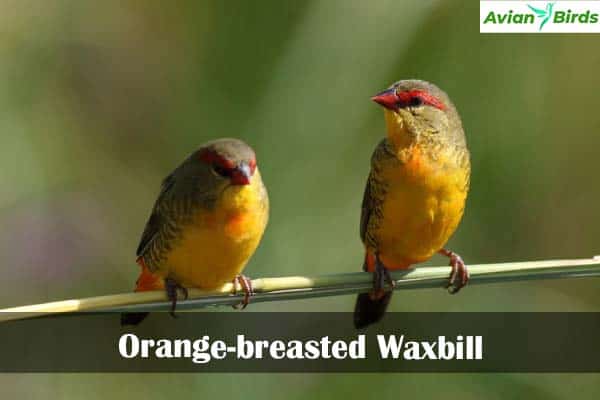
- Size: 3-4 inches
- Habitat: Grasslands, wetlands, and agricultural fields
- Fun Fact: These birds are often seen in pairs or small groups and are known for their acrobatic foraging habits, frequently hanging upside down to reach seeds.
Read More🐦Related Articles:
- Orange Breasted Birds
- Why Do Your Chickens Have Bald Spots
- Birds with Black Heads
- Small Birds With Yellow Chests
- Owls In The Family
- Can Turkeys Fly
FAQs About Small Birds with Red Beaks
Q1. What attracts these birds to certain habitats?
Most small birds with red beaks are found in habitats with abundant food sources, such as grasslands, wetlands, and areas with plenty of seeds or insects. Some, like the Northern Cardinal, also thrive in suburban gardens.
Q2. Are any of these red-beaked birds suitable as pets?
Yes, birds like the Zebra Finch, Java Sparrow, and Gouldian Finch are popular in the pet trade for their colourful plumage and social behaviour. However, checking local regulations is essential, as some species may have restrictions.
Q3. Why do some birds have red beaks?
The red colour in beaks and feathers is often due to carotenoid pigments, which birds get from their diet. A red beak can signify health and vitality in many cases, helping birds attract mates.
Q4. Can red-beaked birds be found worldwide?
Yes, small birds with red beaks are found across various continents, from Africa and Asia to Europe, Australia, and the Americas. Each species has adapted to its specific environment, making it unique to its region.

